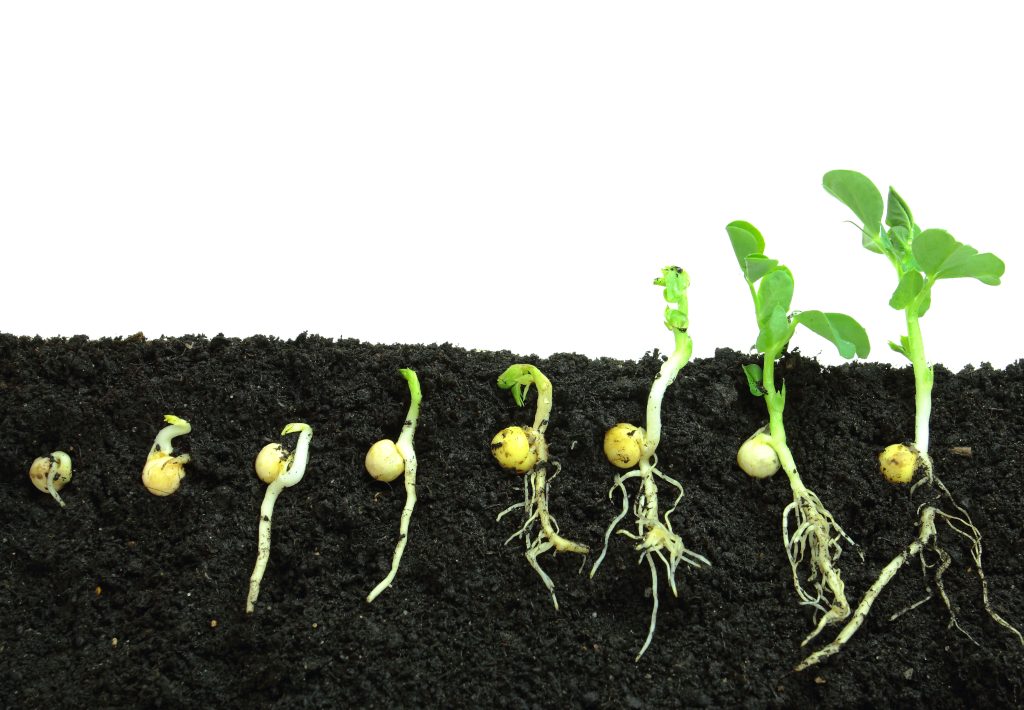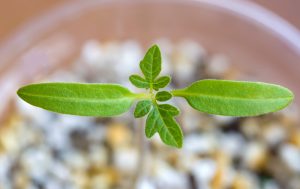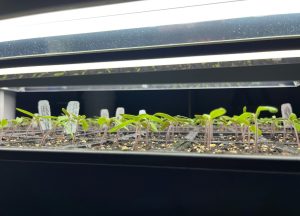
The Science of Germination
Navigating through a few recent hard freezes, the Florida Panhandle’s winter still holds its grip, but a shift is anticipated. As we transition into February and March, the temperatures are likely to soften, offering a milder embrace. Amidst this change, many gardeners eagerly anticipate the surge of new life. This phenomenon is deeply intertwined with the captivating science of germination. It is indeed an intricate process that transforms a dormant seed into a thriving plant.
The Germination Process

Germination is when a seed transforms into a seedling, ready to emerge from the soil. But what exactly is happening during this process?
Germination commences with the absorption of water, also known as imbibition. As water is absorbed, the seed swells, softening the seed coat and paving the way for the emergence of the embryo. This pivotal step activates enzymes within the seed, kickstarting the breakdown of stored nutrients, such as starches, into simpler forms like sugars. These nutrients serve as the fuel for the growing embryo until it can harness energy from the sun through photosynthesis.
The first visible sign of this process is the emergence of the radicle, the embryonic root that anchors the plant and facilitates water and nutrient absorption from the soil, establishing a solid foundation for growth. Following radicle development, the embryonic stem begins its upward journey, accompanied by the emergence of cotyledons, or seed leaves, that aid in nutrient storage during the initial stages of growth.
With the growth of leaves, the seedling gains the ability to engage in photosynthesis. This transformative process allows the plant to convert sunlight into energy, fueling further growth and development. The root system continues to expand and branch out, enhancing stability and enabling the plant to absorb water and essential nutrients from the soil.
As the plant progresses through stages of growth, it eventually matures to produce flowers and seeds, completing the life cycle. These seeds, in turn, hold the potential to initiate the germination process anew, perpetuating the cycle of growth and renewal.
Temperature’s Role in Successful Germination

Temperature is a critical factor influencing the success of germination, serving as a cue for enzymes to initiate their performance. Seeds exhibit distinct temperature preferences, affecting both the likelihood and speed of germination. Understanding these preferences is essential for a thriving garden.
While some seeds, like peppers and tomatoes, flourish in warmer conditions, others, such as lettuce and spinach, prefer cooler environments. It’s crucial to identify the ideal temperature range for your chosen seeds to ensure successful germination. When planning your garden, closely monitor soil temperature and sow seeds at the appropriate time to align with their preferences. For instance, if you’re starting warm season seeds like tomatoes in winter, consider investing in heat mats, a greenhouse, or indoor full spectrum grow lights to maintain a consistent and favorable temperature for germination.
Optimizing germination and ensuring a successful start for your garden hinges on understanding the specific temperature preferences of your crops. Temperature not only influences whether a seed will germinate but also plays a significant role in determining the speed of germination, providing a valuable head start when appropriately managed.
Chilling Requirements for Some Seeds

Some seeds, like black-eyed Susan (Rudbeckia hirta) and purple coneflower (Echinacea purpurea), exhibit a preference for a winter chill through a process known as stratification. This involves exposing seeds to cold temperatures before planting. It mimics the conditions these seeds would experience in their native habitats, breaking dormancy and promoting successful germination. If you’re growing seeds that benefit from cold stratification, consider simulating winter conditions by freezing them for at least a month before planting. Additionally, certain seeds benefit from wet stratification, where they are kept moist during the cold treatment.
While stratification is more commonly associated with perennial flowers and woody plants, there are some vegetable seeds that can also benefit from cold treatment. Carrots and beets may experience improved germination rates with a brief period of cold stratification. Keep in mind that while these vegetables may benefit from stratification, it’s not always necessary for successful germination. Many vegetable seeds are adapted to germinate without a cold treatment.
As we anticipate the arrival of spring, let’s not just see seeds as tiny dormant entities but as intricate biochemical wonders waiting to unfold. Germination is not merely a biological process; it is a testament to the resilience and adaptability of life. It is a reminder of the interconnectedness of all living things and the perpetual cycle of growth and renewal that defines the plant kingdom here on Earth.
- Cool Season Annual Herbs to Plant in December - December 11, 2025
- The Dirt on Compost: Hot and Worm Composting at Home - October 30, 2025
- Fall Gardening Spotlight: Collard Greens - October 3, 2025
